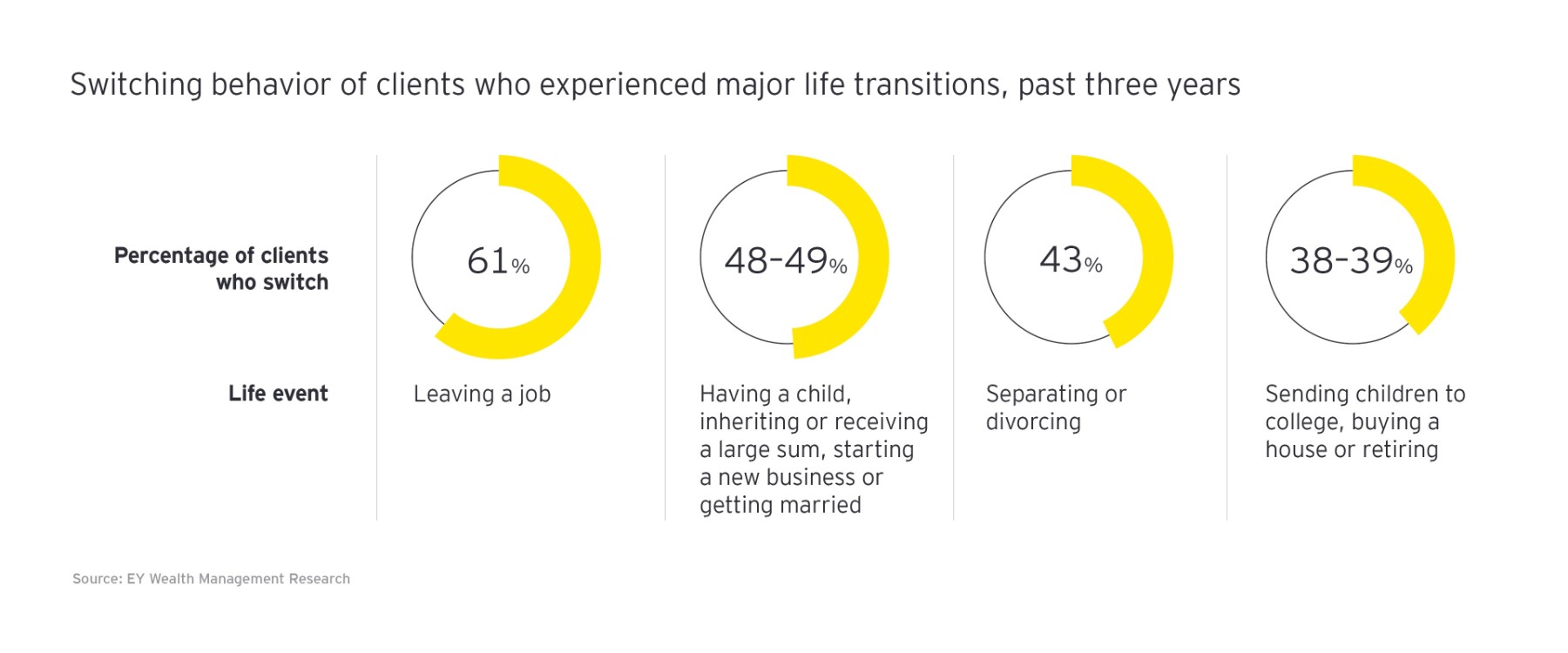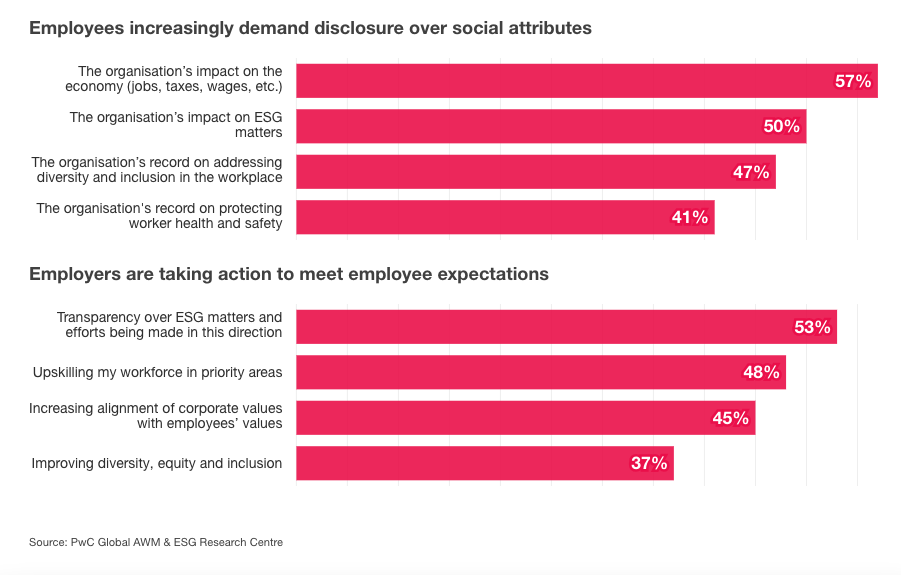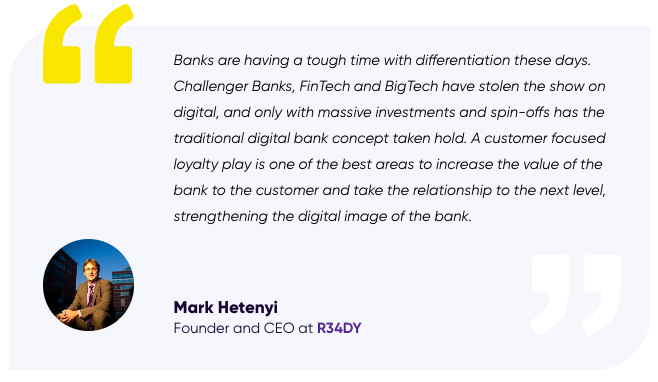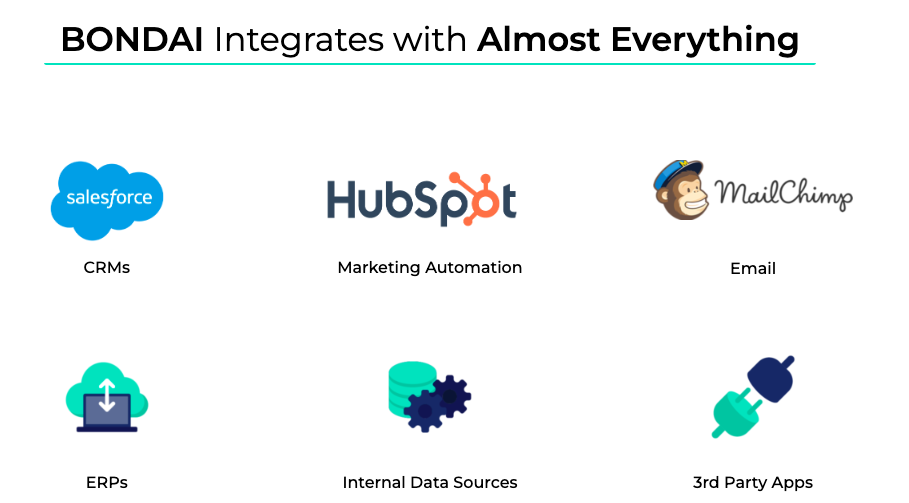8 Reasons Why Wealth Management Firms Lose Clients & AUM (And How to Keep Them)

Global assets under management (AUM) fell 10% in 2022 from 2021 (US$115.1 trillion versus US$127.5 trillion) but will rebound by 2027, reaching US$147.3 trillion.
This landscape marks the territory where wealth management companies will fight for customers.
However, the fighting typically focuses on acquiring new clients, not serving existing ones better.
But retention is key.
Why?
Because gaining new customers incurs a fivefold higher expense than retaining existing ones.
Stronger customer relationships and customer loyalty further impact the bottom line as a 5% decrease in customers leaving improves a bank’s profitability by between 2 and 8%.
Here are 8 of the biggest reasons why wealth management firms lose clients and assets under management, followed by our solutions to the problems.
1. Clients Are Loyal to the Advisor (Not the Firm)
Because of the sensitivity and confidentiality required for someone to know one’s financial situation, clients often develop a strong sense of trust and rapport with their financial advisors.
According to JD Power, 63% of investors indicate they would likely leave their firm to follow their advisor if he/she left the firm.
Clients tend to stay loyal when they believe their advisor genuinely seeks their best interests. This trust is built over time through personalized advice and a deep understanding of the client’s financial goals and needs.
63% of clients owe their loyalty to advisors, not to the advisory firm, and claim they will move their investments with the advisor.
Sachin Kalra
The advisor-client relationship is what cements long-term loyalty, but the firm’s reputation is also crucial.
2. The Wealthiest Clients Are More Likely to Leave
A study by EY reported that 39% of ultra-high-net-worth (UHNW) clients say they plan to switch or move money from a wealth management provider in the next three years, compared with just over one-quarter of high-net-worth (HNW) and just under a third of mass affluent clients.
This is expected, as UHNW clients are most likely to diversify their assets among a greater number of wealth management providers.
UHNW and HNW individuals often have more complex financial situations, including multiple income sources, investments, and estate planning needs.
In addition, they have higher expectations when it comes to investment performance and portfolio growth.
They expect a high level of personalization and communication and may be more sensitive to potential conflicts of interest within financial services firms.

3. Clients Are More Likely to Switch Firms During Major Life Events
People often rethink their financial strategies when they go through significant life events, regardless of their wealth level.
When certain situations require specialized advice, such as retirements, sales of companies, or inheritance, the investor’s likelihood of changing financial advisors increases.
“Wealth management providers are investing heavily in data and analytic capabilities to anticipate these events. They are developing AI tools to learn from client data and determine when to address specific needs before their clients look to other providers for help,” states EY.

4. Younger Investors Are More Likely to Switch Advisors
Younger investors, particularly Millennials and Generation Z, are more likely to switch financial advisors or financial services companies for several reasons.
In general, their needs, preferences, and expectations often differ from older generations.
“Younger investors, particularly Millennials and Generation Z, are more likely to switch financial advisors or financial services companies for several reasons,” reports the Investments and Wealth Institute.
Clients younger than 45 look for more frequent meetings, virtual reviews, and connecting with their advisors through social media.
To neglect or not prioritize this demographic group would be a big mistake for banks and financial services companies.
Despite a global pandemic, market volatility, and a war in Ukraine, millions of Americans started investing in the last few years. In fact, 60% of young investors (ages 18–34) began to invest in 2020, according to Fidelity.

Although it may be difficult for some advisors to consider serving this not-yet-affluent group, these dynamics pose a potential threat to the future of advisory businesses that don’t take steps to target young investors. Gen Y and Gen Z are seeking financial advice today and may become entrenched with providers that meet their needs now, advises Fidelity.

Sooner rather than later, the younger generations will inherit a significant share of the $84 trillion in wealth transfer between now and the year 2045, according to Cerulli. A factor not to be overlooked.
5. You’re Not Aligning With Your Investors’ “Sustainability” and “Legacy” Goals
In line with current social and environmental concerns, investors, particularly Millennials and Gen Z, often prioritize environmental, social, and governance (ESG) factors in their investment decisions.
Worldwide, 78% of wealth clients now have goals related to sustainability in their lives, while 62% of clients have goals related to generating a legacy, reports EY.
Research by PwC found a similar trend. 53% of asset and wealth management (AWM) firms are making efforts to improve transparency over ESG matters and efforts in this direction, states the report.

When it comes to sustainability goals, wealth providers’ understanding is failing to keep up with clients’ beliefs, according to EY.
- 50% of clients believe wealth managers understand their goals
- 41% feel their provider could understand those goals better
- 5% think firms don’t understand them at all
- 35% of clients with sustainability goals are looking to switch wealth managers in the next three years, over twice as many as those without sustainability goals (15%)
It’s also striking that a quarter of millennial clients see sustainable investment propositions as the most important factor when selecting a new wealth manager, EY highlights.
35% of clients with sustainability goals are looking to switch wealth managers in the next three years, over twice as many as those without sustainability goals (15%).
EY
6. You’re Not Getting Word-of-Mouth Referrals
Referrals play a significant role in the selection of a financial services provider and their loyalty programs due to the sensitive and confidential nature of personal finances.
Ruler Analytics found that 26% of traffic to financial services sites came from direct traffic. Word-of-mouth marketing is important for the finance industry, just like it is for legal and professional services.
According to research, 81% of customers rely on recommendations from friends and family rather than brands.
Worth-of-mouth is not only important for brand reputation. It goes a long way when choosing a financial advisor.
Financial services company Magnify Money surveyed over 1,500 Americans, exploring various topics, including their reasons for having or not having a financial advisor, their willingness to consider acquiring a financial advisor in the future, and their perceptions regarding the availability of similar information through Google.
Their findings are pretty surprising:
- 42% think financial advisors are only for wealthy people.
- 38% think the same information can be found online.
- 25% think you don’t need a financial advisor until you’re middle-aged.
These numbers show the importance of word-of-mouth advice.
Recommendations from friends, family members, colleagues, or other trusted sources can influence an individual’s decision when choosing a financial institution or engaging with their loyalty programs.
7. You’re Not Making It “Personal”
Financial services programs often experience increased loyalty when they adopt a “personal” approach because personalized services and tailored experiences resonate more with customers, creating a stronger emotional connection.
Consider these stats by Epsilon:
- 80% of people are more likely to do business with a company that offers personalized experiences.
- 89% of people are more likely to do business with a financial institution that offers personalized experiences.
- 64% define personalization as customization and service.
An Antavo report reached the same conclusion.
Based on data from over 260 corporate survey respondents from all regions of the world, they found that when asked to name a feature or strategy they would most like to invest in, the top answer was personalization.
See what this senior manager of the leading software engineering company EPAM shared with Antavo.

He’s not alone.

The message is clear.
Customers are more inclined to stay loyal to financial institutions and loyalty programs that make them feel valued and cater to their specific needs and preferences.
Banks investing in personalization strategies, including data analytics and customer segmentation, are likelier to build lasting relationships with their clients and create loyalty beyond transactional interactions.
8. Your “Earn and Burn” Loyalty Program Does Little for Loyalty
“Earn and Burn” loyalty programs, where customers accumulate points or rewards that can be redeemed for products or services, are very popular but not sustainable.
97% of loyalty programs only rely on transaction-based incentives, but 77% of these transactional programs fail within the first two years, reports Capgemini Consulting Analysis.
“While they’re great at getting people to opt-in, they’re not great at increasing engagement and spending. Therefore, profitability can take a long time,” warns tech company Ebbo.
A recent Yotpo survey found that 90% of people would join a loyalty program offered by their favorite brands. However, while a consumer belongs to 14.8 loyalty programs on average, they actively engage in only 6.7.
97% of loyalty programs only rely on transaction-based incentives, but 77% of these transactional programs fail within the first two years.
Capgemini Consulting Analysis
What Needs to Change?
Wealth Management Firms Need to Move Towards a Relationship-Based Rewards Model
As we have seen, these programs have traditionally been focused on rewarding customers for repeat purchases or the frequent use of services, often using points or discounts as incentives.
However, as consumer expectations shift and technology continues to reshape industries, the future of loyalty programs is set to undergo a profound transformation.
Mladen Vladic, Head of Loyalty Solutions for FIS®, predicts that the next decade will see a shift away from frequency-based rewards programs towards a more holistic, relationship-based rewards model.
Rather than rewarding customers with cash back on card purchases or a free cup of coffee after they buy four cups at the gas station, we’ll see an evolution of a fully customer-centric relationship rewards model that recognizes everything customers do with retailers and their financial institution, rewarding them for all their behaviors and not just some of them.
Mladen Vladic
We are entering an era where loyalty programs will be built upon a fully customer-centric foundation.
In this new paradigm, customers will be rewarded for all their behaviors and interactions with retailers and financial institutions, not just specific transactions.
But how?
Loyalty vs. Affinity
These terms are sometimes used interchangeably.
However, they represent distinct aspects of how customers connect with and relate to the brands and companies, especially with the ones to whom they trust their assets.
Loyalty reflects a customer’s faithfulness and commitment to a particular brand or product.
When someone exhibits brand loyalty, they consistently choose a brand’s products or services over alternatives.
This choice often stems from practical considerations like quality, reliability, or familiarity.
On the other hand, brand affinity transcends the transactional realm. It delves into the emotional bond between a customer and a brand or company.
Affinity goes beyond product utility. It’s about the customer identifying with the brand’s values, personality, and ethos.
This emotional connection can be powerful, influencing purchase decisions, advocacy, and long-term loyalty.
How BONDAi Can Help
BONDAi is an Affinity Solution helping wealth management firms engage with their clients, delivering a new blueprint for a client experience that deepens relationships and affinity.
Here’s how BONDAi helps solve the 8 big problems wealth management companies face.
Problem 1: Clients Loyal to Advisor (Not the Firm)
BONDAi Solution: Advisor Relationship Enhancement
BONDAi’s affinity program does not compete with the advisor; it augments their business and client relationships by delivering digestible and actionable insights regarding their clients’ behaviors, preferences, and spending habits, which has been proven to simplify and augment their client communications.
Through curated luxury rewards, content, and experiences, BONDAi’s platform strengthens the affinity clients have with the Firm, in addition to the advisor.
Together, this has proven to reduce total churn and grow the Firm’s AUM.
Problem 2: The Wealthiest Clients Most Likely to Leave
BONDAi Solution: A Tiered Rewards Program for UHNW Clients
BONDAi’s Affinity Solution delivers escalating bespoke rewards and experiences curated specifically to what motivates investors (and their advisors) across multiple wealth tiers. Our program is not a one-size-fits-all approach.
Further, the user experience for each tier can be customized to recognize the client’s value to your firm.
In addition, our solution can support unique user experiences for non-financial-based tiers to engage other groups such as employees, Financial Advisors, or online investors.
Problem 3: Clients More Likely to Leave During Major Life Events
BONDAi Solution: Supporting Milestones
BONDAi’s 10+ years managing rewards and experiences for some of the largest wealth management firms in the world has created a knowledge base of typical client lifecycles.
This helped us create tools designed to provide access to the right experts, concierge services, and experiences at the right time.
This innovative platform includes Gift My Client services to offer gifting, rewards, and content tailored to major life events while ensuring compliance with gifting regulations.
So if the kids are thinking of college, give your client access to a pre-college enrichment program.
Client taking a year off to travel? Connect them with a travel concierge who can help plan and manage their trip.
Client buy a new house or have a new baby? Use Gift My Client to send them an appropriate congrats gift.
Be there for your client through life’s major milestones, and you’ll create more loyalty and affinity.

Problem 4: Younger Investors More Likely to Switch Advisors
BONDAi Solution: Non-Transactional Experiences and Family Engagement
BONDAi strategically mitigates churn risks by extending its reach to include family members alongside investors.
That means rewards for the whole family, not just the investor.
Mom and Dad may want access to Bruce Springsteen tickets, but their kids might be more interested in Ed Sheeran or Taylor Swift.
This ensures that younger generations inheriting wealth maintain vital connections with both their financial advisors and the wealth management firm.
In addition, BONDAi actively facilitates acquiring and retaining younger investors who may not have inherited wealth by offering non-transactional online experiences aligned with their values and preferences.
Problem 5: You’re Not Aligning with Investor Sustainability and Legacy Goals
BONDAi Solution: Support Sustainability and Legacy Goals
BONDAi does not pull its rewards from a standard offers database.
Instead, we work with your team to acquire and manage offers, content, and education that align with your brand and your client’s philanthropic, community, and sustainability values and needs.
These can include Eco-Tour travel planning, content on the most effective ways to fund climate action, or expert webinars on selecting and connecting with meaningful charities.
Problem 6: You’re Not Getting Word-of-Mouth Referrals
BONDAi Solution: Make Experiences Worth Talking About
49% of consumers who have had a positive customer experience say they would share it on social media or post a positive review online.
BONDAi encourages clients to share their experiences, driving referrals and word-of-mouth marketing.
In addition to reducing churn created by investors following financial advisors to another wealth management firm or younger generations moving inherited wealth to other financial advisors, BONDAi provides an opportunity to increase leads and aid in acquiring new clients and AUM.
Problem 7: You’re Not Making it “Personal”
BONDAi Solution: Make It Personal!
BONDAi goes beyond traditional points-based “earn-and-burn” loyalty programs, focusing on building relationships beyond commerce.
The platform offers AI-based and user-driven personalization, ensuring that rewards and experiences resonate with each client’s unique preferences.
Likewise, BONDAi accommodates different investor groups based on age, AUM level, or services used, ensuring tailored experiences for all.
BONDAi’s dashboard and analytics give you on-demand activity, penetration, and engagement reports while identifying loyal customers who could also be leveraged as advocates or influencers for your audience.

Problem 8: Your “Earn and Burn” Loyalty Program Does Little for Loyalty
BONDAi: Build a Relationship-Based Rewards Model
BONDAi focuses on building relationships beyond mere transactions.
This platform can seamlessly integrate or enhance existing loyalty programs or create a new recognition and reward system across the entire user experience.
Clients can unlock varying levels of rewards and experiences based on AUM levels, services subscribed to, or tenure as a client.
Don’t stop at offers and discounts; add special events, unique experiences, and corporate gifting to create a truly exceptional customer experience.
Whether it’s a special speaker, VIP wine tasting, or congratulating a client milestone with a bespoke gift, we can help your CX stand out.
Thank your most important clients for simply being clients – build relationships beyond the transaction.
Forge Unbreakable Bonds, Drive Growth
Unleash a new era of client loyalty with BONDAi’s seamless affinity solutions. From minimizing churn to amplifying AUM growth, our purpose-built platform stands out in the wealth management industry.
Break free from traditional models, secure your clients, and position your firm for enduring success.
Discover the BONDAi Difference Today.